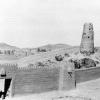- 3 replies
- 4,625 views
- Add Reply
- 5 replies
- 2,024 views
- Add Reply
- 12 replies
- 3,131 views
- Add Reply
- 3 replies
- 3,431 views
- Add Reply
- 6 replies
- 1,861 views
- Add Reply
Sky Sat-1

By Razeeni,
These are sample images from micro satellite Sky Sat-1 by Skybox imaging.
http://firstimagery.skybox.com
Help creating a Digital Terrain Model
By A_M,
Hello people,
I need to create a DTM with this specifications:
- Post spacing
- Vertical accuracy
- Horizontal accuracy
- Confidence level
- Data Classification Integriry Level
- Maintenance period
How can I do it in ArcGIS? Anyone know how to do it or know any tutorial?
Many thanks,
Andre
georeferening of cadastral map with satellite imagery
By adnan0001,
Hi friends
I have an issue ...
I have cadstral map with satellite image , as i want to georeference it , cadastral map is not georeferenced
Can any1 plz tell me methodology of it..
how to proceed
How to compute Bare soil index using Landsat data
By achoknyz,
Hello Friends,
Kindly how do you compute bare soil index from landsat data.
Any help will be highly appreciated.
Regards
Achoknyz
Dubai
By Bene71,
Any know where I could find some satellite imagery of dubai? I am doing a report for school and I'm going to use LANDSAT for a temporal analysis, but I would like to incorporate some recent imagery with decent resolution.
-
Forum Statistics
8.7k
Total Topics43.4k
Total Posts




